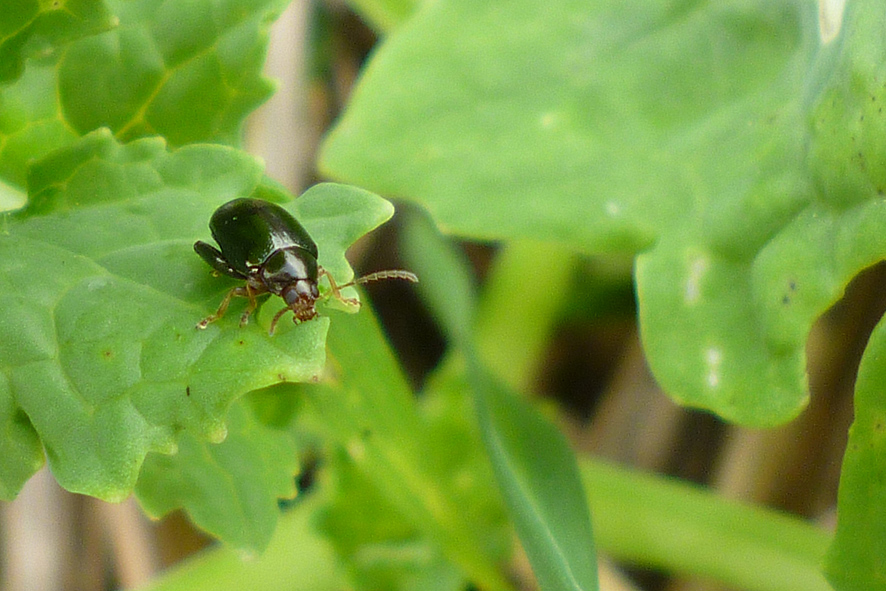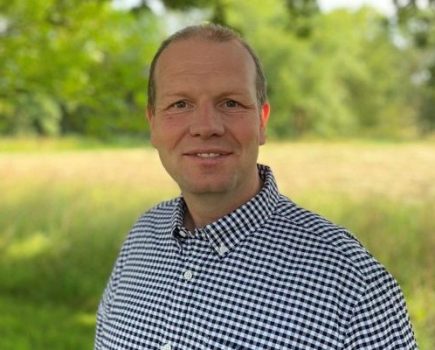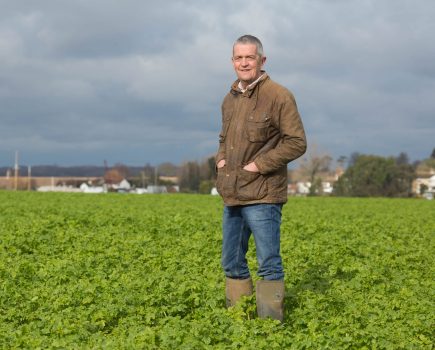Perhaps it’s just a sign of getting older, but this year seems to have flown by and what a year it’s been! As we prepare to turn the page on 2016, there’s plenty to reflect on.
It’s been a rollercoaster as far as the weather goes, with extremes of wet and dry. With hardly a frost last winter, the Somme-like ground conditions of early spring turned into a kind harvest and a very dry, open autumn where drilling was completed with hardly a hiccup.
Thankfully, frosts seem to have returned to their rightful spot in the calendar and this winter has every feeling it may be a chilly one, though who knows where the Jetstream will decide to sit in the coming months.

Cabbage stem flea beetle are one of the bugs benefiting from a pesticide armoury that’s shrinking, while what’s left of it they appear to be shrugging off.
And it’s these unpredictable variations in our climate that make each season so different and with its own set of challenges. 2016 has been a reminder that agronomy solutions need to be intelligently thought through, with chemistry as the last line of defence rather than the only one.
There was the discovery of septoria strains with insensitivity to SDHIs. Resistance to SDHIs will happen – it’s a question of how quickly and how much field performance will be affected. With azole activity on a downward spiral, it’s a worrying development which will no doubt challenge agronomists over the next few years. The message it does hammer home is not to overuse this crucial group of fungicides.
Yellow rust had its own ideas about which varieties it could infect, re-writing the RL resistance ratings in the process. The evolution of yellow rust has sped up dramatically in recent years and we’re playing catch-up each season with this rampant disease, working with a dataset detailing its population that’s a year out of date when it’s produced. The Kranich race has been confirmed as one that was active this spring and a new race, Invicta, was identified. But who knows what combination of genes are out there right now?
It’s been a good year for bugs, who found there was precious little in the pesticide armoury that affects them, but not for the growers trying to control them. Aphids and cabbage stem flea beetle in particular took their toll, with flea beetle larvae proving to be as much of a problem as the adults.
Blackgrass went bonkers. Herbicides struggled in the autumn weather conditions and by June there was no hiding the extent of the problem. There were anxious times while the future of glyphosate was discussed in the corridors of power – could we manage blackgrass without it?
As well as resistance issues, there’s also the reduction in the number of active ingredients available to contend with. It’s an ongoing process and some of the realities of the new hazard-based legislation are only just beginning to bite as products come up for renewal. Next year we’ll learn the fate of some of the azoles. All in all, it adds up to a tremendously challenging time.
But it’s far from doom and gloom. On the contrary, there really is something fantastic going on in the industry – we’re raising our game! Some of these problems seem to have got the grey matter ticking and an increasing number of growers aren’t waiting for solutions to be handed to them. They’re doing their own trials and finding the answers that work for them. What’s even more inspiring is that growers are sharing the information they’re gathering. And the same is happening in academia. The gap between research and applied agriculture is shrinking fast. ‘Together we’re stronger’ may be a bit of a cliché but collaboration is definitely advantageous to all.
And we need to be fitter and more efficient. There’re a load of uncertainties that go with Brexit, but however it all shakes out, one thing’s for sure: farming will need to wash its face without relying on subsidies in the years to come. The needs of the NHS are likely to appeal more to the populace than spending public money on agriculture. I’m not saying it’s right or wrong but politicians serve to get elected and that’s the bottom line.
And then there’s the Trump card… 2017 is going to be a very interesting year!




